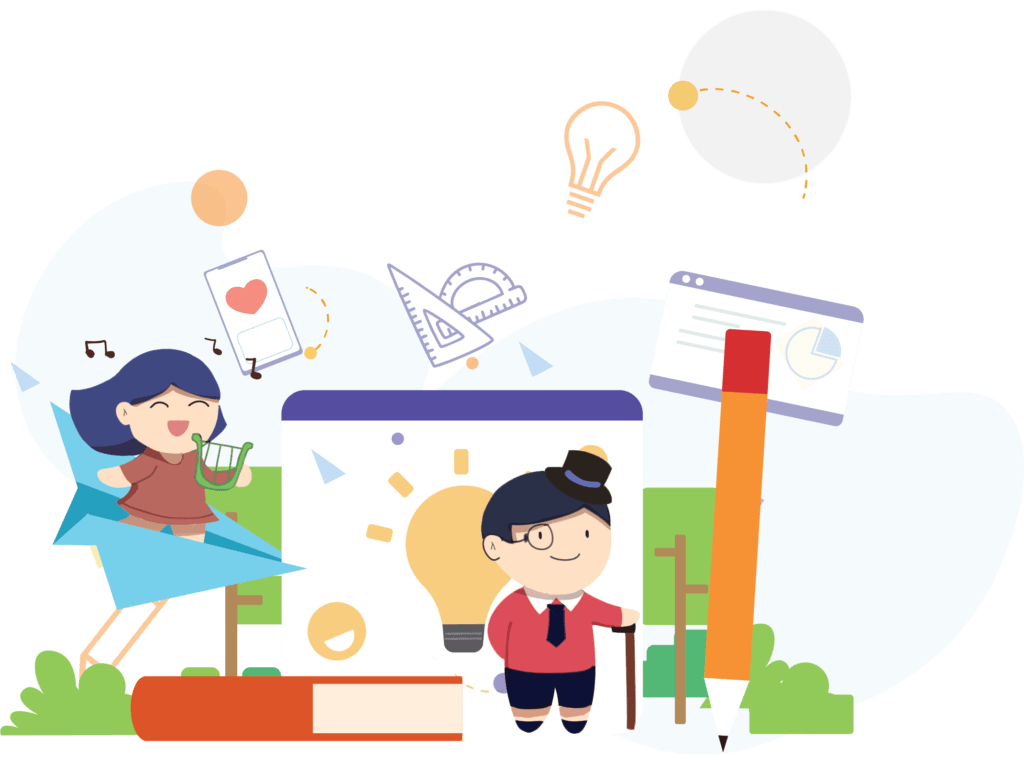Let’s kick the fixed mindset out and start developing a growth mindset!
Learn the benefits of adopting a growth mindset and the steps you can take to free yourself from a fixed one.
How we think about ourselves and our skills can have a big effect on how well we do in school, at work, and in everyday life. The problem is that not everyone stops to consider their own thought processes, and thus they may make inaccurate judgments about their own abilities. So, what exactly is a “growth mindset”? Why and how will it assist us in accomplishing our objectives?
What exactly is a growth mindset?
The term “mindset” refers to a person’s overall set of beliefs and assumptions about themselves. If you have a growth mindset, you think you can improve your abilities through practice, strategy, and feedback from others.
The word “growth mindset” describes a way of thinking about obstacles and failures. People with a growth mindset know that they can improve their skills and talents, even if they have difficulty with them at first. They have faith that with hard work, they may eventually reach their full potential.
Professor Carol Dweck of the University of Stanford in the United States first used the phrase “growth mindset” in her 2006 book Mindset: The New Psychology of Success. In her research, she explored how people’s self-perceptions of their own intelligence and their capacity for learning affected their outcomes.
Her research has shown that those who believe they can improve their skills are more successful than those who assume their potential is static. Those with a growth mindset are optimistic and proactive, constantly pushing themselves beyond their comfort zones in pursuit of new knowledge.
Benefits of Developing Growth Mindset
People with a growth mindset believe that they have room to improve their abilities. They believe that they may improve their abilities via dedicated practice and study.
In contrast, a “fixed mindset” is the firm belief that one’s qualities, whether positive or negative, are unchangeable over time. To a large extent, your level of confidence in your own success or failure depends on which of these two perspectives you hold. Here are the top five benefits from adopting a growth mindset.
Improves self-esteem.
Confidence is essential for success, and a growth attitude is key to achieving it. Those that adopt this perspective tend to be honest about their strengths and flaws, allowing them to develop their best qualities while addressing their weaker ones. They do not give up on trying to improve their weaknesses.
As a result, students gain the belief that their hard work and dedication will pay off in the end. They end up doing things they thought were impossible, which boosts their confidence and encourages them to take on even more difficult objectives in the future.
Improve your abilities.
If you adopt a growth mentality, you’ll find that it’s easier to acquire new knowledge and improve your performance in unfamiliar situations. If you adopt a growth mentality, you will be more motivated to work toward your personal goals.
Employers value candidates with a growth mindset because they are more likely to adapt to new situations. This is because new hires will put in the effort and have faith that they can learn on the job even if they do not have the necessary abilities.
Accept new challenges.
There will always be new difficulties to overcome in business. These can come in a variety of forms, and oftentimes the company will have to deal with several at once. A worker with a growth mentality will not give up or make excuses, but rather will find creative solutions to any issues.
A business owner who has a development mentality will not place blame on her staff but will instead inspire them to collaborate. To inspire their teams to believe in themselves and progress as individuals and as a group, leaders must embrace the growth mentality. But that doesn’t give you the license to risk everything. It suggests you’re willing to push the company into unfamiliar territory while taking calculated risks.
Explore new opportunities.
If you adopt a growth attitude, you will be able to find possibilities where others see obstacles. It doesn’t mean you’re blind to the difficulties; rather, it shows that you have the capability to assess the chances of success and failure for the challenge at hand. A person with a fixed attitude will give up without even exploring other possibilities.
Learn from others’ feedback.
A person with a growth mentality is more likely to seek feedback in the hopes of enhancing their performance and strategies for the future. Why? Because if you have a growth mindset, you welcome comments as a way to gain insight into a topic you may have overlooked.
Strategies for Developing a Growth Mindset

If you believe in developing a growth mindset, there are steps you can take. Dr. Dweck’s research shows that most people do not have either a fixed or a growth mindset but rather fall somewhere in the middle.
It’s important to remember that not everyone can be successful in every endeavor. In spite of the fact that we all have the potential to succeed through hard work, dedication, and attitude, there are still limits to what any one person can do. Furthermore, a combination of circumstances beyond a person’s attitude typically determines success.
Keeping this in mind, we have listed a few strategies for developing a growth mindset.
Assess your current frame of thinking.
One way to assess your current frame of mind is to think about your current approach to problems, whether they arise in the workplace or the classroom. Think about how often you use phrases like “I’m a natural person” or “I’ve learned to work well with people.” What about “she’s a natural leader” or “she made her way up to the leader position” instead?
Such inquiries can reveal whether you have a fixed or a growth mindset. Being aware of this is the first step in making changes that could help you reconsider your professional path.
Evaluate the improvements you’ve made.
Consider an area in which you have improved since you last tried it. How did you overcome such challenges? Just why is it less difficult now? And what exactly did you do to bring about this transformation?
The characteristics of a growth mindset are ideas like these, which encourage you to reflect on the time and effort you’ve put into improving in specific areas.
Learn from others’ experiences with success.
Think about a time you witnessed someone succeed despite overwhelming odds. Take into account their means of achievement and what that may imply about their potential for growth.
Seek Feedback
One strategy to foster a growth mindset is to actively seek out feedback from others, regardless of whether or not you feel your effort was successful. They can show you where you’ve grown and where you still need work. You can use this information to guide your pursuit of personal growth objectives.
Make use of the power of “yet.”
Dr. Dweck discussed the idea of “yet” in a TEDx speech. Realizing that you will never be perfect at every skill or subject is the essence of this aspect of a fixed mindset. But you can get better at these things if you put in the effort and stay persistent.
A key part of developing a growth mindset is to see your weaknesses as potential strengths.
Learn some new skills and information.
Try something you’ve never done before, and push yourself to improve in an area where you’re weak. You may begin by studying another language, taking up an instrument, or even learning the fundamentals of economics.
In order to adopt a growth mindset and be flexible when acquiring new skills, you must become used to breaking out of your usual habits and routines.
Fail and learn.
Don’t expect perfection from your first few attempts. Do not be afraid to make mistakes; doing so is the only way to gain valuable experience. Consider viewing failures as opportunities to improve, not as signs of incompetence.
When you make a mistake, you learn something about yourself and the areas you need to focus on to grow and develop.
Try to be gentle with yourself.
Instead of being hard on yourself, think about how you’d respond to a friend or family member in your shoes. If someone you knew well failed at something you were an expert in, how would you react? Would you tell them they were useless or help them improve?
You can enhance your social interactions, support systems, and communication skills by practicing mindfulness. To avoid the negative effects of a fixed mindset, it can also help you recognize and reject related thoughts.
Observe some situations.
Observing people who have a growth mindset might be educational if you’re working to cultivate one yourself. There are several ways to gain insight from others, including reading the works of experts like Dr. Dweck and observing the people around you. Observe their actions and strategies, and consider how you might implement them.
Set realistic goals.
A number of aspects that influence one’s success have been discussed. There are a variety of factors that can contribute, including personality, intelligence, and background. But if you offer yourself a set of goals that are both difficult and achievable, you have a better chance of making progress toward your objectives.
Takeaways
Multiple studies have found positive outcomes from adopting a growth mindset, despite the existence of some contradictory evidence on the topic’s effectiveness. It makes sense that this way of thinking, along with other benefits, could help someone grow and learn.
You should be able to use the growth mindset examples and advice we’ve given to evaluate whether or not adopting this attitude will be useful for your personal circumstances. You can make progress toward your goals and expand your own potential by pushing yourself to new intellectual heights.







